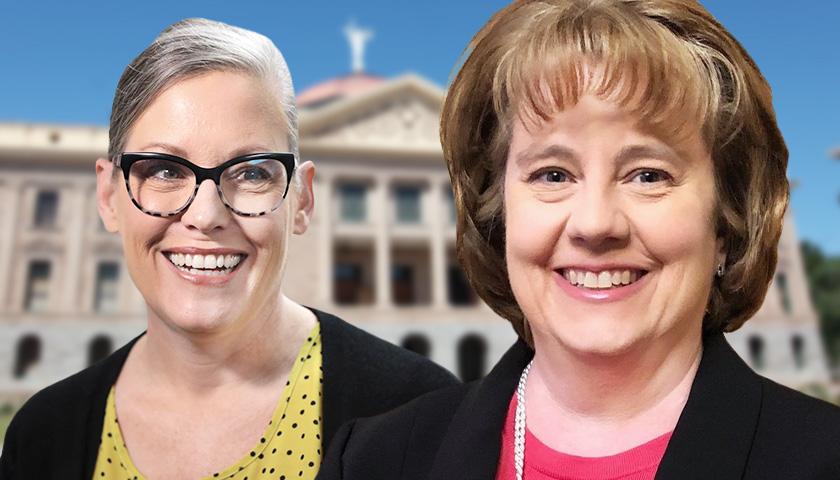Maricopa County Attorney Rachel Mitchell (R) filed an amicus curiae brief to the Arizona Supreme Court (ASC) Tuesday, stating her expert opinion that Governor Katie Hobbs cannot refuse to execute death row inmate Aaron Gunches, 51.
“As County Attorney, I took an oath to uphold the US Constitution and the constitution and laws of the State of Arizona. These recognize that both the victim and the accused have rights. Our brief recognizes and supports the right of victims to a ‘prompt and final conclusion of the case,'” Mitchell said regarding the filing.
Josselyn Berry, a spokesperson for Hobbs, told The Arizona Sun Times that the governor’s office is currently reviewing the case, and their response is due Wednesday.
According to the brief, the issue is whether Hobbs and Arizona Department of Corrections, Rehabilitation, & Reentry (ADCRR) Director Ryan Thornell can deny executing Gunches after the ASC issued a warrant.
Over the past months, Gunches’s case has gone through several back and forths. As reported by The Sun Times in November 2022, Gunches, on death row for the 2002 murder of Ted Price, filed a motion to the ACS requesting his own death warrant. Allegedly he wanted justice to be carried out and “give closure to the victim’s family.” Following his request, former Arizona Attorney General Mark Brnovich (R) also requested a death warrant from the ASC.
However, in January, The Arizona Republic reported that Gunches filed a motion to withdraw his previous request for a warrant. According to his request, he grew hesitant about proceeding due to botched executions that have happened in the state.
Moreover, it appeared that Gunches may have gotten his wish as new Attorney General Kris Mayes took office. In January, Mayes announced her office had filed a motion to withdraw Brnovich’s attempt to see the execution through. On the same day, Hobbs issued Executive Order 5, which directed an independent review and improve how capital punishments are carried out in Arizona. Hobbs appointed retired Magistrate Judge David Duncan to carry out the inspection.
Yet, ASC Chief Justice Robert Brutinel released an order on March 2nd, undoing all of this. In short, Brutinel argued that the original motion for a warrant asserted that all state law requirements for execution had been satisfied, and the warrant to withdraw did not prove otherwise. Therefore, on the same day, Brutinel released a warrant of execution for Gunches to be carried out on April 6th. However, Hobbs released a statement on March 3rd, stating that she was not required to carry out the motion and, therefore would not until Duncan’s review is complete.
This statement led to Mitchell’s new brief, arguing that the warrant’s language was not permissive; Gunches was to be executed. Moreover, no law allows Hobbs (pictured above, left) to unilaterally overturn it. According to the brief, Arizona law requires a recommendation from the Arizona Board of Executive Clemency before a governor can provide a reprieve or pardon. Mitchell (pictured above, right) argued that Hobbs’ refusal to carry out the warrant is “materially indistinguishable from a reprieve;” therefore, Hobbs’s actions contradict Arizona law.
Furthermore, Mitchell argued that Hobbs violated the Arizona Victim Bill of Rights (VBR), which protects a victim’s right to justice and finality. Mitchell argued, “Governor Hobbs’s oath and duty to support the Constitution and laws of Arizona applies with equal force to victims.”
Ultimately, Mitchell wrote that it had been over 20 years since the crime, and the victims still await justice. She asked that the court find Hobbs and Thornell cannot refuse the warrant.
– – –
Neil Jones is a reporter for The Arizona Sun Times and The Star News Network. Follow Neil on Twitter. Email tips to [email protected].
Photo “Rachel Mitchell” by Rachel Mitchell for Maricopa County Attorney. Photo “Katie Hobbs” by Gage Skidmore. CC BY-SA 2.0. Background Photo “Arizona Capitol” by Gage Skidmore. CC BY-SA 2.0.





